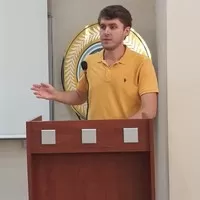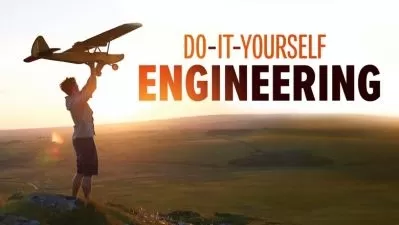Gas Turbines & Jet Engines
Ahmet Oğuz Hoşöz
2:51:45
Description
All cycle types related to gas turbines and their calculation, everything about design and R&D
What You'll Learn?
- To learn the working principle of gas turbines used in vehicles and power plants.
- To learn about the various types of jet engines and their differences, afterburners, fuel types and their prominent features.
- To reach a level that can solve various problems in terms of emissions, efficiency and cost, as well as internal parts and design details of gas turbines.
- To learn the theoretical cycles in which gas turbines are idealized and to be able to make various calculations.
- To be able to use what they have learned in various projects or problems that they may encounter at work and school.
Who is this for?
More details
DescriptionAlthough it is known as two separate systems in the society, jet engines are the sub-branch of gas turbines in particular.Since it is a wide field, the subjects are divided into courses that are divided into various sub-titles as much as possible, thus making it easy for those looking for a special subtitle to find the subject they want. After the general explanation about the course in the content, as the main title, respectively; course content, important factors to know about gas flow, nozzles and emitters, theoretical cycles, real cycles, aircraft engines and the fuel types used in them, as well as the emissions caused by these engines and the damage they cause to the environment and human health. In addition, homework questions were shared as PDFs with the links given under the sample questions. In the conclusion part, the latest developments in the sector are briefly mentioned and the interpretation part is given. Those who take this course will have sufficient knowledge and experience on the subject when they complete the course. This course will be useful for those who want to work in the aviation and aircraft industry, as well as for friends who want to take part in various power plants or energy projects, as well as in space-related projects. It is also aimed to be useful for various undergraduate and graduate school courses such as thermodynamics, heat transfer, fluid mechanics, gas turbines or design and project courses. In the content, various assignments, articles and resources are presented to the friends who are related to the subject. Finally, during the presentation of the content, the common mistake of most instructors, "causing the student's attention away from the lesson by explaining the subject too slowly" was especially emphasized and the subjects were tried to be explained as clearly and quickly as possible.
Who this course is for:
- Engineers working in the field of energy and thermodynamics
- Engineering students who want to work in the field of energy and thermodynamics
- Anyone who is interested in this field and wants to improve themselves
- Ä°nstructors
Although it is known as two separate systems in the society, jet engines are the sub-branch of gas turbines in particular.Since it is a wide field, the subjects are divided into courses that are divided into various sub-titles as much as possible, thus making it easy for those looking for a special subtitle to find the subject they want. After the general explanation about the course in the content, as the main title, respectively; course content, important factors to know about gas flow, nozzles and emitters, theoretical cycles, real cycles, aircraft engines and the fuel types used in them, as well as the emissions caused by these engines and the damage they cause to the environment and human health. In addition, homework questions were shared as PDFs with the links given under the sample questions. In the conclusion part, the latest developments in the sector are briefly mentioned and the interpretation part is given. Those who take this course will have sufficient knowledge and experience on the subject when they complete the course. This course will be useful for those who want to work in the aviation and aircraft industry, as well as for friends who want to take part in various power plants or energy projects, as well as in space-related projects. It is also aimed to be useful for various undergraduate and graduate school courses such as thermodynamics, heat transfer, fluid mechanics, gas turbines or design and project courses. In the content, various assignments, articles and resources are presented to the friends who are related to the subject. Finally, during the presentation of the content, the common mistake of most instructors, "causing the student's attention away from the lesson by explaining the subject too slowly" was especially emphasized and the subjects were tried to be explained as clearly and quickly as possible.
Who this course is for:
- Engineers working in the field of energy and thermodynamics
- Engineering students who want to work in the field of energy and thermodynamics
- Anyone who is interested in this field and wants to improve themselves
- Ä°nstructors
User Reviews
Rating
Ahmet Oğuz Hoşöz
Instructor's Courses
Udemy
View courses Udemy- language english
- Training sessions 32
- duration 2:51:45
- Release Date 2022/12/14











